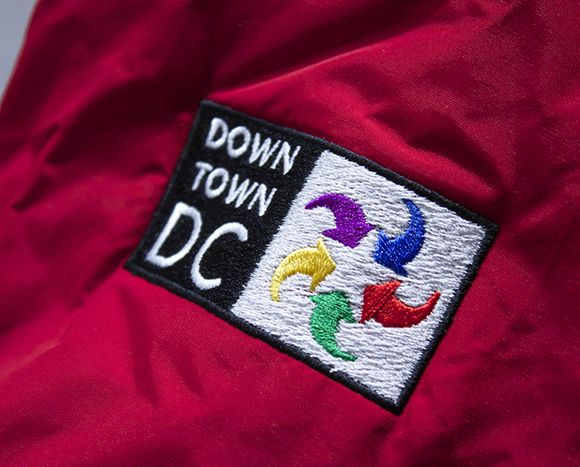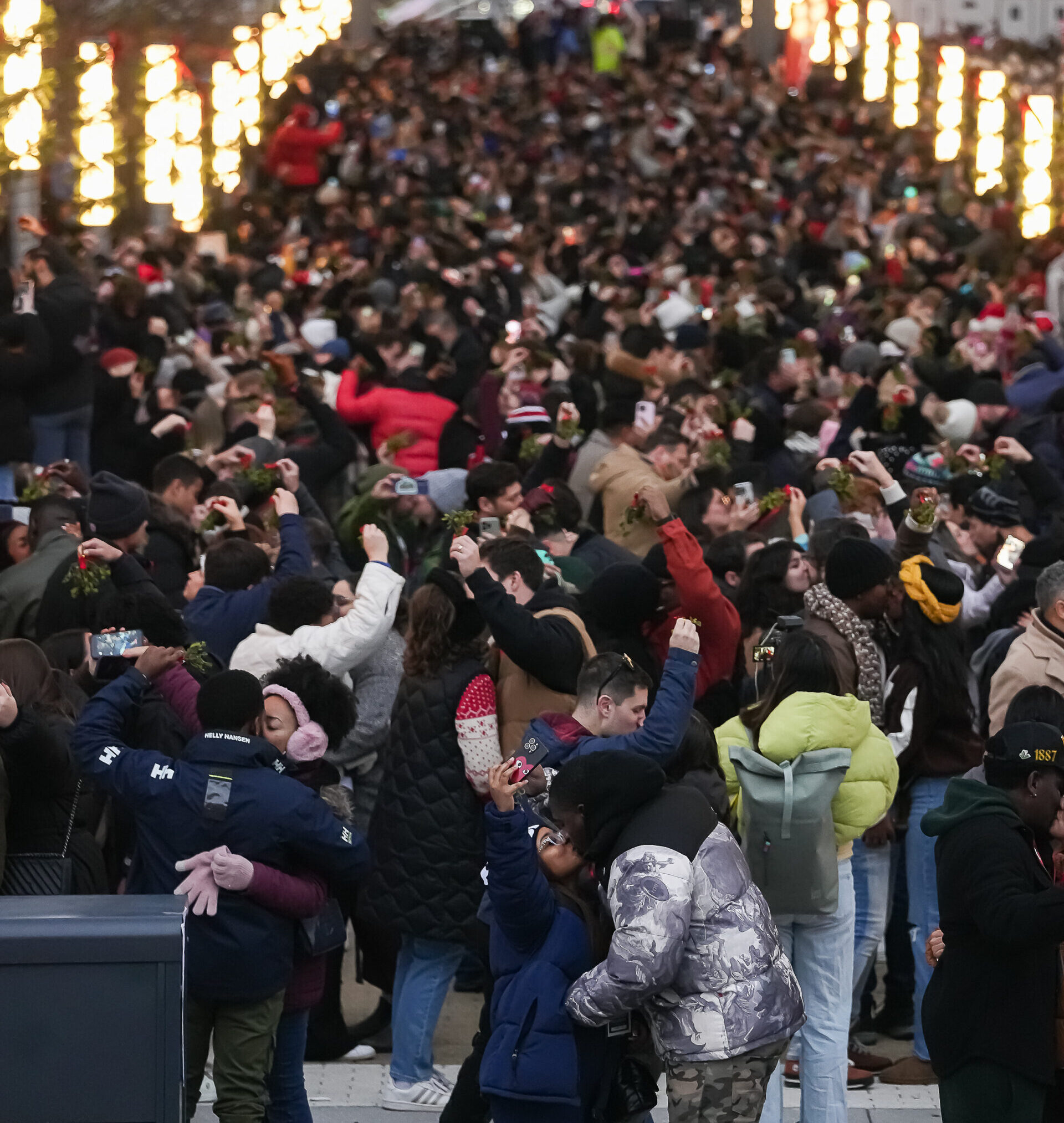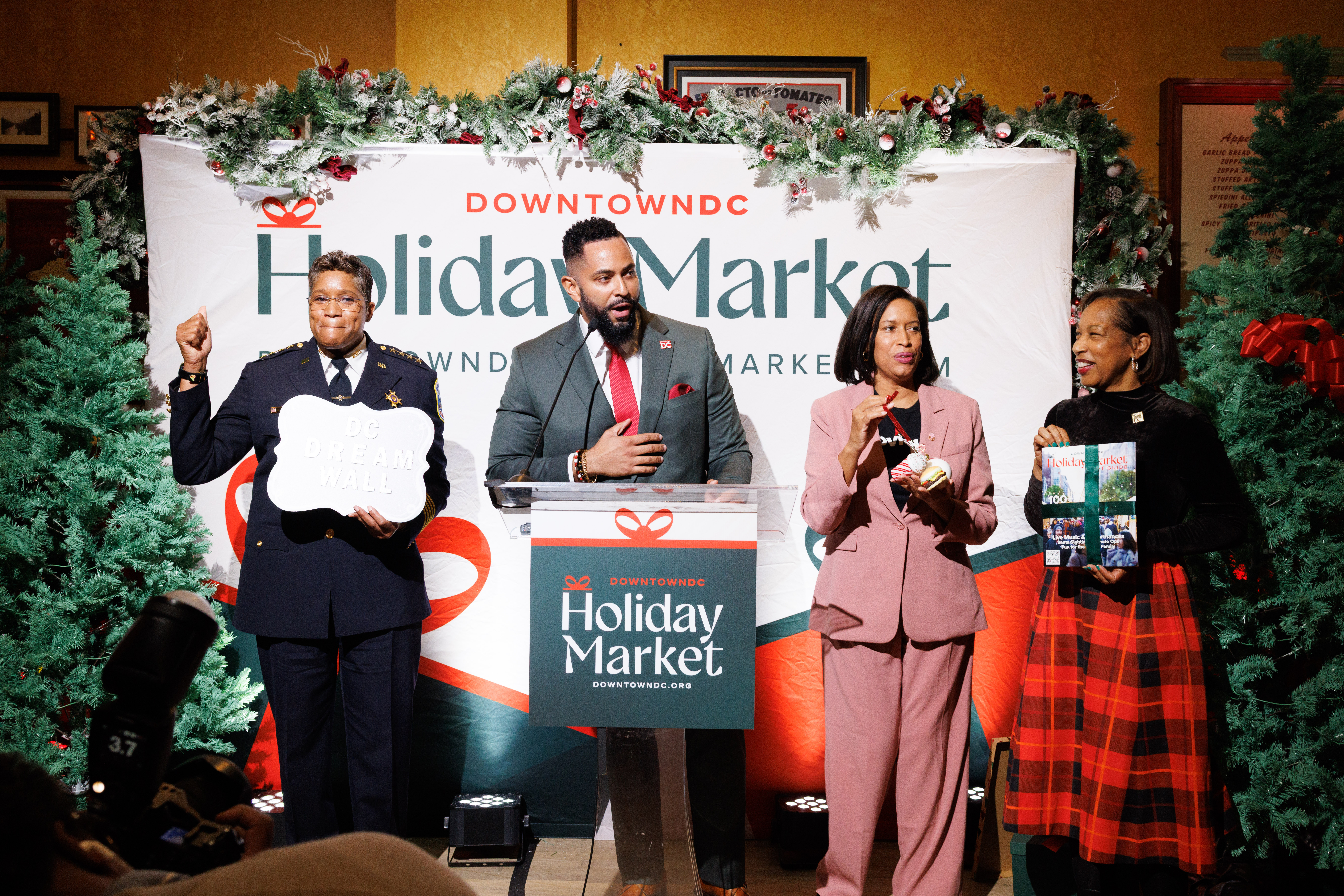
DowntownDC BID Board Kicks Off 2015, Announces New SAM Class
The DowntownDC Business Improvement District (BID) hopes to add 10 new Safety/Hospitality SAMs to its staff this year, board members learned Jan. 26 at the first BID board meeting of 2015.
BID Director of Operations Everett D.E. Scruggs gave an update on the BID’s Safety/Hospitality and Maintenance employees, known as SAMs, who act as the eyes and ears of Downtown and more.
Scruggs announced that there will be a Spring 2015 SAM Safety/Hospitality training class, the first Safety/Hospitality class in three years. (Last year, the BID added a new class of Maintenance SAMs to help keep pace with growing nightlife and activity in the BID.)
Safety/Hospitality SAMs act as on-the-street concierges for Downtown and perform a variety of vital functions to keep Downtown clean and safe.
The announcement for applicants will go out on February 2, with a class start date of March 9 and a graduation date of April 10. Scruggs says he hopes to add 10 more SAMs to the team. (Learn more about the SAMs’ core values and expectations).
The 79-person SAM team recently became what Scruggs called “Smart SAMs,” thanks to the introduction of new handheld communication devices. The new devices replace the old two-way radio communication system and allows for automated documentation, improved data collection, enhanced deployment capability, and quicker response times.
Crime is significantly down in one area of the BID, board members learned at January’s meeting.
Last fall, Downtown experienced an uptick in crimes in the Chinatown/Gallery Place/Verizon Center area of Downtown DC. The DowntownDC BID, which has a longstanding relationship and partnership with the DC Metropolitan Police Department (MPD), expressed concern over the issue and MPD quickly responded. A representative from the department, Commander Jeff Brown from the First District, was on hand at the board meeting to offer a positive update.
The MPD increased their presence in the area and worked with community partners to identify loiterers, quality of life crimes and disorder and narcotics-related offenses. They also increased video surveillance and organized a “Fight Back” effort with other law enforcement and city agencies to target specific crime and social disorder issues within the community.
Thanks to these measures, the efforts of Brown and his team, and the cooperation of area businesses, crime in the area is down by 25 percent and arrests have increased by 47 percent. “It’s our Times Square,” said Bradley. “On evenings where there are events, there can be more than 75,000 to 100,000 people in the Gallery Place/Chinatown area. It’s a vibrant area and it needs our attention.” (To learn more, visit the DowntownDC BID Crime Map)
Gerry Widdicombe, Director of Economic Development for the DowntownDC BID, at January’s meeting delivered an update on the local economy. He noted that overall fiscal condition of DC remains positive and the city has an $800 million rainy day fund. The 2015 tax cuts will go into effect meaning that District residents should see about $300 more in their pockets at the end of the year thanks to those cuts, Widdicombe said.
Fiscal year 2014 was a record year for Downtown hotels and office market occupancy. Restaurant activity remained steady, with an average of five new restaurants opening each year.
Overall employment in DC is up with an increase of 12,800 jobs. However, the DC unemployment rate remains around 7 percent, above the national average of 5.4 percent. For 2015, the BID’s Economic Development team is predicting employment growth of 7,400 new jobs. (Click here to learn more about the State of Downtown)
Finances at the BID remained strong, board members learned at the meeting. In FY 2014, the DowntownDC BID maintained its high standard of fiscal health and continued to fund and support the organization’s mission to help create remarkable urban spaces in Downtown and retain and attract businesses.
The BID has the appropriate amount of reserves and money available and expenses are in line with reserves, said CPA Benjamin Wilhelm, a partner with Baker Tilley.
Board members in January also received an update on regional and downtown infrastructure funding needs from representatives of the Metropolitan Washington Council of Governments. MWCOG just released a first-of-its-kind report that attempts to “put our arms around the region’s infrastructure,” said Chuck Bean MWCOG Executive Director.
The State of the Region Infrastructure Report covers transportation, water infrastructure, energy, local public buildings and public safety communications. Overall, the region is facing a funding gap of $58 billion for infrastructure maintenance and improvements, over half of which ($24.5 billion) is needed for improving the region’s roads, bridges, metro and three aviation hubs. “To sustain our growth, we have to pay attention to what’s underground and what’s moving us around,” said DowntownDC BID Executive Director Richard Bradley.


